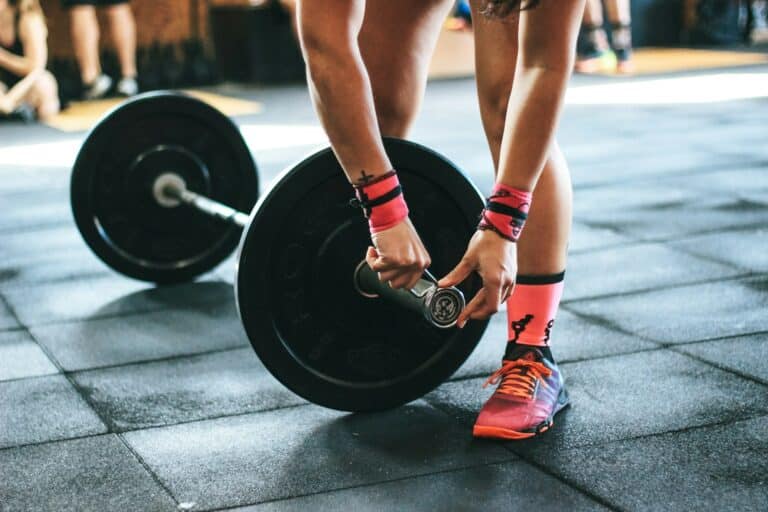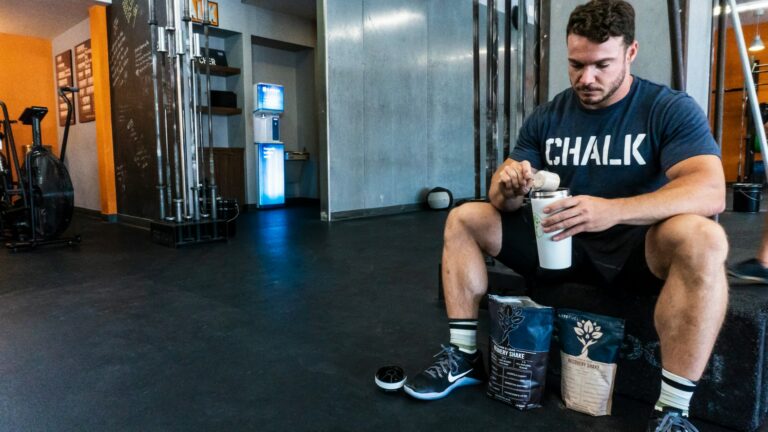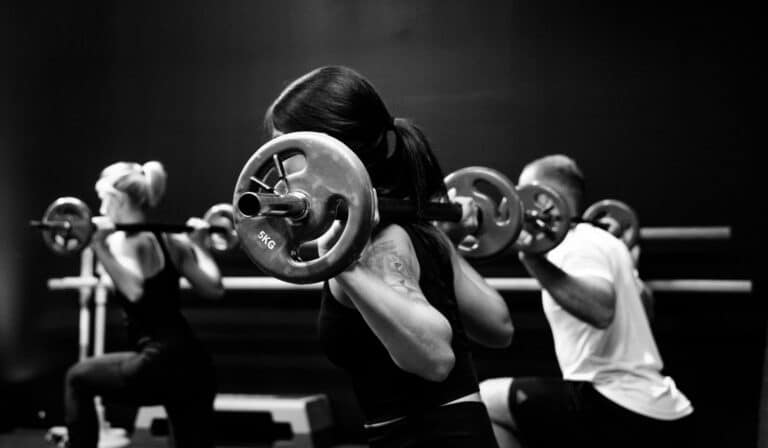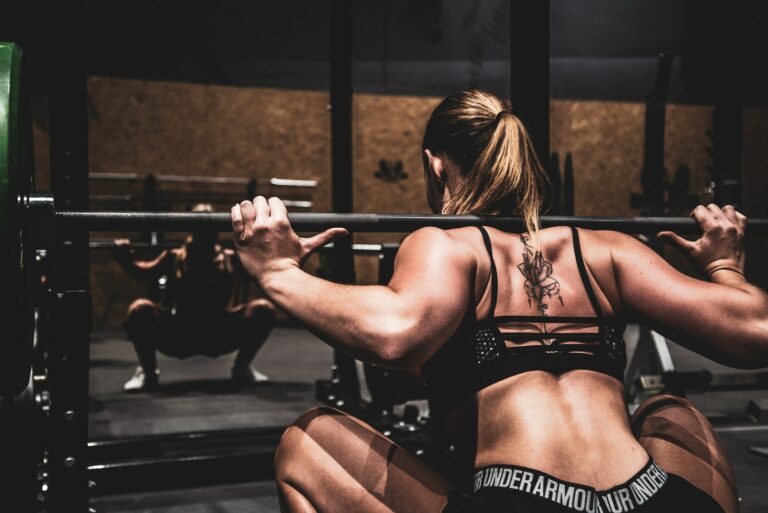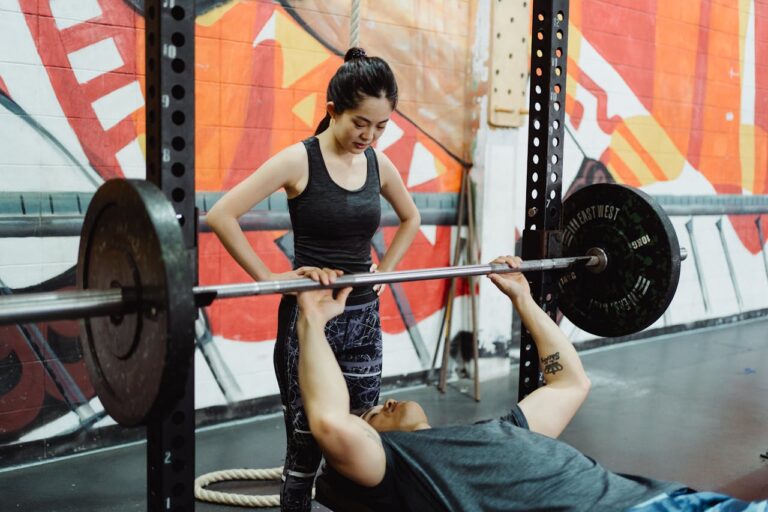Ultimate Guide to Creating a Home Workout Routine for Weight Loss
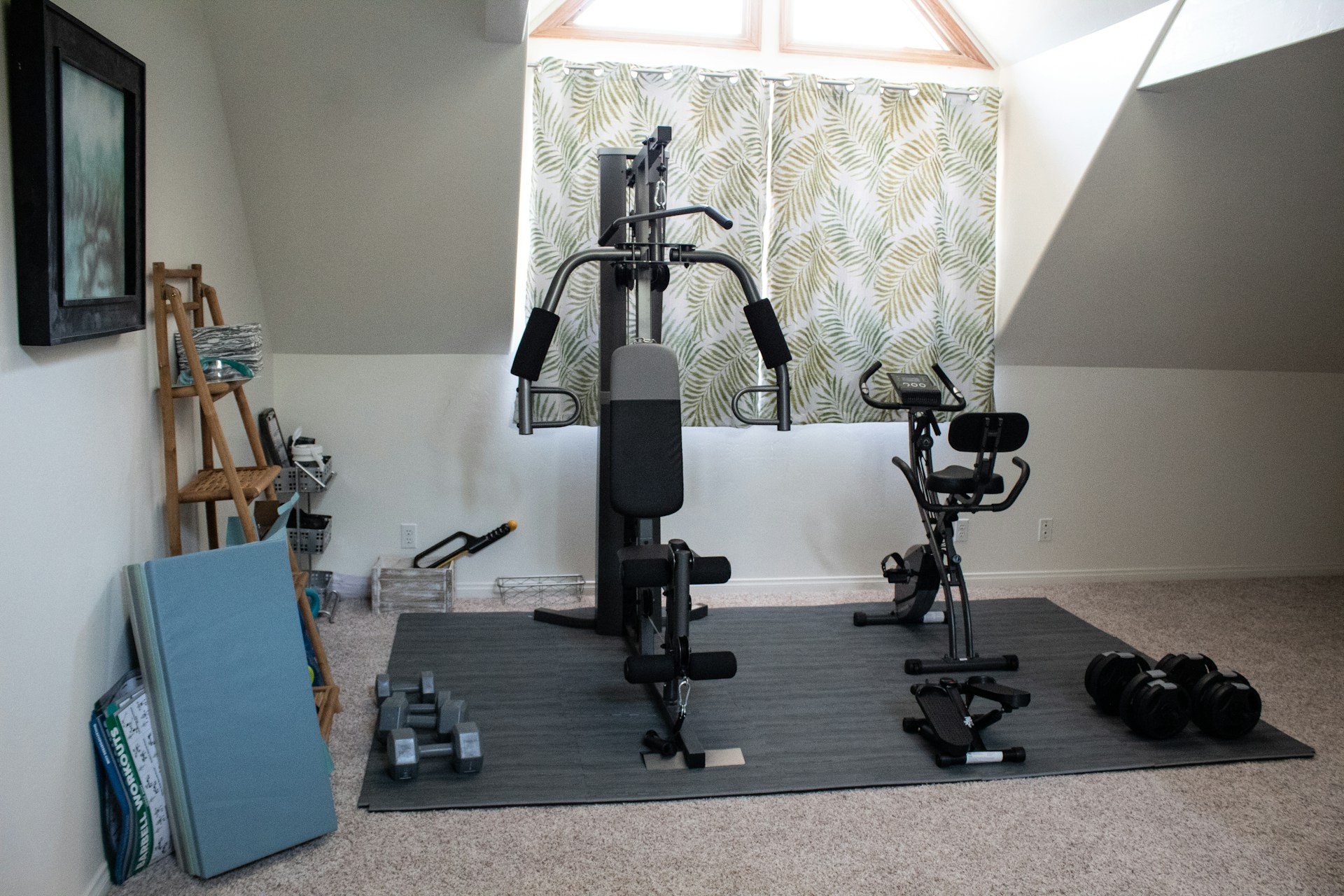
- Should You Train To Muscle Failure Every Set? What You Need To Know - March 4, 2025
- Nutrition in a Hurry: Top Post-Workout Snacks for Active People - February 20, 2025
- 15 Healthy Meal Prep Recipes: Your Weight Loss Made Easy - February 18, 2025
“Ultimate Guide to Creating a Home Workout Routine for Weight Loss” is your go-to resource for shedding those extra pounds right from the comfort of your living room. You’ll discover practical tips, simple yet effective exercises, and motivational secrets that make sticking to your new routine a breeze. Whether you’re new to fitness or looking to reinvigorate your current regimen, this guide empowers you to stay consistent, track your progress, and ultimately achieve your weight loss goals without ever having to step foot in a gym. Have you ever wondered how to create an effective home workout routine for weight loss? With busy schedules, gym memberships, and the occasional trepidation of working out in public, creating a home workout routine can be a game-changer for many people. Losing weight and getting in shape doesn’t necessarily require fancy equipment or a gym membership. You can achieve incredible results from the comfort of your home with some knowledge and the right plan.
Welcome to “The Ultimate Guide to Creating a Home Workout Routine for Weight Loss.” We’ll walk you through everything you need to know, from setting your goals to selecting the right exercises and creating a sustainable routine. Let’s get started!
Setting Your Goals
Before diving into exercises, let’s establish the foundation: your goals. What do you want to achieve? Losing weight doesn’t just mean shedding pounds; it also means building a healthier, stronger you.
Identify Your Objectives
Begin by defining clear, attainable objectives. Do you want to lose a specific amount of weight, tone certain parts of your body, or improve your overall health? Write down these goals and remind yourself of them regularly. Examples of goals:
- Lose 20 pounds in 3 months
- Reduce body fat percentage by 5%
- Increase muscle mass in the arms and legs
- Improve cardiovascular health
Setting Realistic Expectations
Weight loss is a gradual process, and setting realistic expectations will help you stay motivated. Aim for steady progress rather than drastic changes. Typically, shedding 1-2 pounds per week is a healthy and sustainable rate.
SMART Goals
Consider using the SMART criteria to define your goals:
- Specific: Be clear about what you want to achieve.
- Measurable: Make sure your goals are quantifiable.
- Achievable: Your goals should be realistic.
- Relevant: Ensure they are important to you.
- Time-bound: Set a deadline to keep you focused.
Understanding the Basics of Home Workouts
With your goals in place, the next step is understanding the pillars of a successful home workout routine.
Importance of Consistency
Consistency is key to achieving your fitness goals. Regular exercise helps build habits, and these habits will yield results over time. Try to set aside dedicated time each day for your workouts.
Balancing Cardio and Strength Training
Combining cardiovascular exercises and strength training can maximize weight loss. Cardio activities like running or cycling help burn calories, while strength training builds muscle. More muscles mean a higher resting metabolic rate, which aids in burning more calories even at rest.
Efficient Use of Space and Equipment
You don’t need a full home gym to get in shape. You can use minimal space and equipment to perform effective workouts. Here are some essentials:
- Yoga mat
- Dumbbells or resistance bands
- Jump rope
- Stability ball
Optional but useful items include kettlebells, a pull-up bar, or a fitness bench.
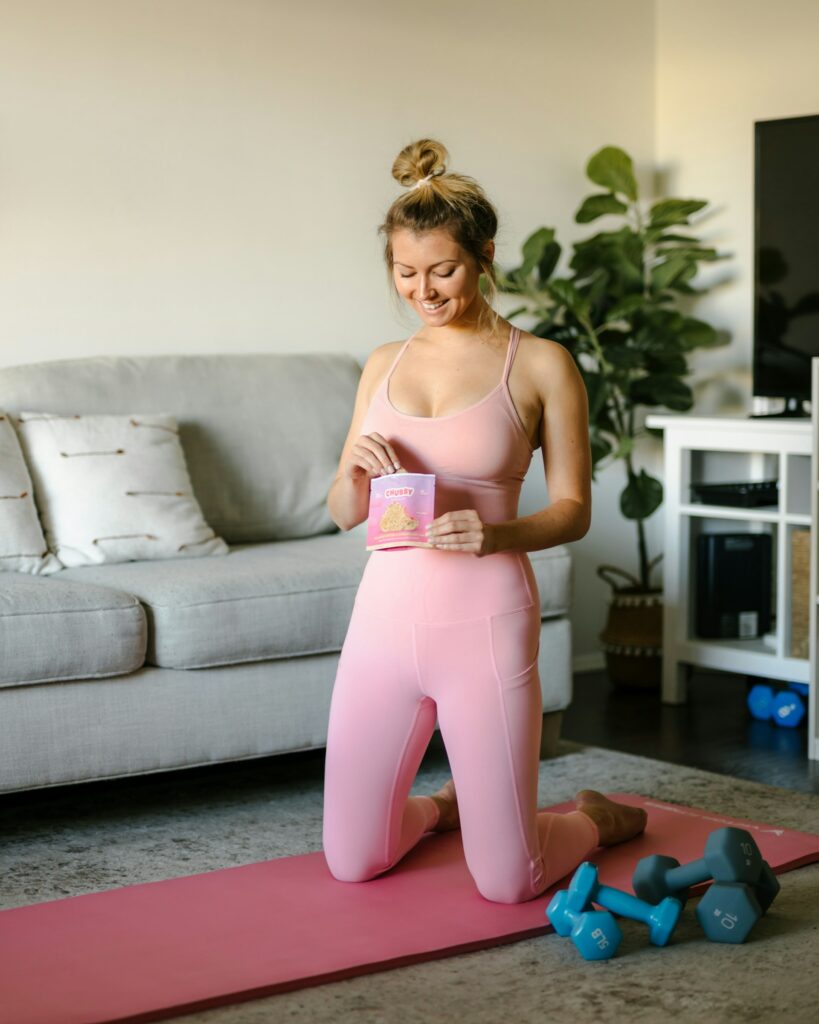
Beginner’s Home Workout Routine
Let’s start with a simple routine. This beginner’s workout focuses on using bodyweight exercises, suitable for everyone regardless of fitness level.
Warm-Up
Always start with a warm-up to increase your heart rate and prepare your muscles.
Dynamic Stretching (5-10 minutes)
- Arm Circles: 10 repetitions forward, 10 backward
- Leg Swings: 10 swings per leg, both forward and sideways
- High Knees: 30 seconds
Circuit Training
Perform the following exercises in a circuit, with minimal rest between each. After completing one circuit, rest for 1-2 minutes, then repeat 2-3 times.
Bodyweight Squats (3 sets of 15 reps)
- Stand with feet shoulder-width apart. Lower your body as if sitting in a chair. Return to standing.
Push-Ups (3 sets of 10-15 reps)
- Start in a plank position with hands below shoulders. Lower your body until the chest almost touches the floor, then push back up.
Plank (3 sets of 30 seconds)
- Hold a plank position, keeping your body straight from head to heels.
Walking Lunges (3 sets of 10 reps per leg)
- Take a step forward and lower your back knee towards the floor. Alternate legs.
Glute Bridges (3 sets of 15 reps)
- Lie on your back with your feet flat. Lift your hips towards the ceiling, squeeze your glutes, and lower back down.
Cool Down
End your workout with a cool-down to help reduce muscle stiffness.
Static Stretching (5-10 minutes)
- Hamstring Stretch: 30 seconds per leg
- Shoulder Stretch: 30 seconds per arm
- Chest Stretch: 30 seconds
Intermediate Home Workout Routine
Once you’re comfortable with basic exercises, it’s time to step it up a notch. The intermediate routine combines more complex exercises and increases intensity.
Warm-Up
Keep your warm-up dynamic and engaging.
Dynamic Stretching (5-10 minutes)
- Jumping Jacks: 1 minute
- Torso Twists: 30 seconds
- Butt Kicks: 30 seconds
Circuit Training
Perform the following exercises in a circuit. Complete 3-4 circuits with a 1-2 minute rest between each circuit.
Jump Squats (3 sets of 15 reps)
- Perform a squat and explode upward, jumping as high as possible before landing softly back into the squat.
Tricep Dips (3 sets of 12-15 reps)
- Use a chair or bench. Lower your body by bending the elbows, then push back up.
Plank to Push-Up (3 sets of 12 reps)
- Start in a plank. Lower one arm at a time into a push-up position, then reverse the motion.
Bulgarian Split Squats (3 sets of 12 reps per leg)
- Place one foot on a bench or chair behind you. Lower the back knee towards the floor, then push back up.
Bicycle Crunches (3 sets of 20 reps)
- Lie on your back. Bring the opposite elbow to the knee while extending the other leg. Alternate sides.
Cool Down
Cooling down helps your body recover more efficiently.
Static Stretching (5-10 minutes)
- Quad Stretch: 30 seconds per leg
- Triceps Stretch: 30 seconds per arm
- Hip Flexor Stretch: 30 seconds per side
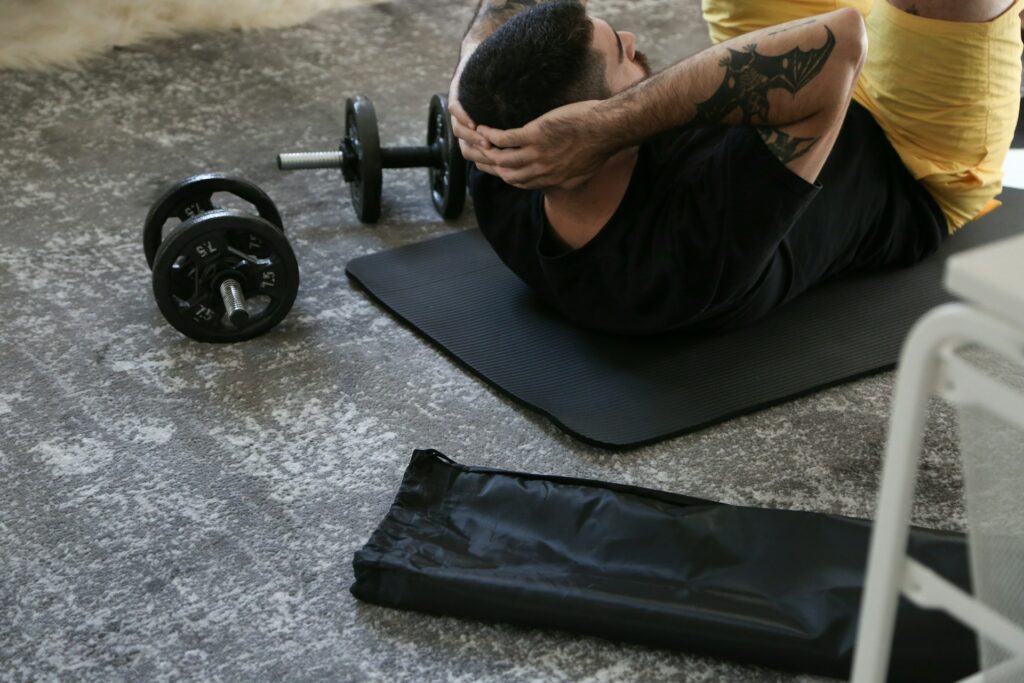
Advanced Home Workout Routine
For those who are more experienced, this advanced workout routine includes high-intensity exercises and dynamic movements.
Warm-Up
A more intensive warm-up prepares you for the advanced workout ahead.
Dynamic Stretching (5-10 minutes)
- Mountain Climbers: 1 minute
- Arm Crosses: 1 minute
- High Knees: 1 minute
Circuit Training
Perform the following exercises in a circuit, aiming for 4-5 repetitions of the circuit with minimal rest.
Burpees (3 sets of 15 reps)
- From standing, drop into a squat, kick your feet back into a plank, perform a push-up, then jump up from the squat.
Pike Push-Ups (3 sets of 12 reps)
- Start in a downward dog position. Lower your head towards the floor and push back up.
Pistol Squats (3 sets of 8 reps per leg)
- Perform a single-leg squat. Extend the non-working leg forward as you lower your body.
Renegade Rows (3 sets of 12 reps per side)
- In a plank position, row one dumbbell towards your hip. Alternate sides.
L-Sit (3 sets of 20 seconds)
- Support your body between two sturdy objects with legs extended forward, forming an “L” shape.
Cool Down
A thorough cool-down is essential to reduce soreness and improve flexibility.
Static Stretching (5-10 minutes)
- IT Band Stretch: 30 seconds per side
- Cat-Cow Stretch: 1 minute
- Figure Four Stretch: 30 seconds per leg
Complementary Workouts
To achieve well-rounded fitness and keep your routine varied and interesting, consider incorporating complementary workouts.
Yoga
Yoga can enhance your flexibility, reduce stress, and contribute to overall well-being. Aim to include a yoga session 1-2 times per week.
Basic Yoga Routine (30 minutes)
- Child’s Pose (Balasana): 1 minute
- Downward Dog (Adho Mukha Svanasana): 1 minute
- Warrior I (Virabhadrasana I): 1 minute per side
- Triangle Pose (Trikonasana): 1 minute per side
- Seated Forward Bend (Paschimottanasana): 1 minute
HIIT
High-Intensity Interval Training (HIIT) is an excellent way to burn fat and improve cardiovascular fitness. Include a HIIT session 1-3 times per week.
HIIT Routine (20 minutes)
- Sprint: 30 seconds
- Rest: 30 seconds
- Jump Squats: 30 seconds
- Rest: 30 seconds
- Mountain Climbers: 30 seconds
- Rest: 30 seconds
Repeat the circuit 3-4 times.
Pilates
Pilates focuses on core strength, flexibility, and overall body conditioning. Incorporate Pilates 1-2 times per week.
Basic Pilates Routine (30 minutes)
- Hundred: 10 breaths
- Roll-Up: 5 reps
- Single Leg Circles: 5 reps per leg
- Rolling Like a Ball: 5 reps
- Plank: 1 minute
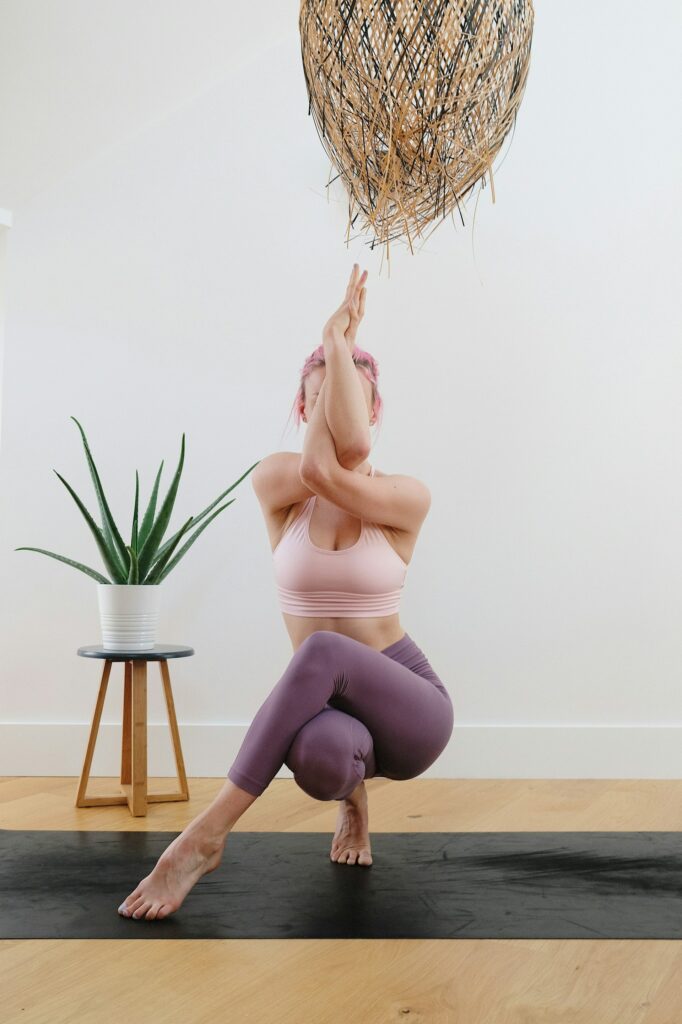
Nutrition for Weight Loss
Exercise is one piece of the puzzle. Proper nutrition is crucial to achieving and maintaining weight loss. Let’s dive into the principles of effective nutrition for weight loss.
Balanced Diet
Aim for a well-balanced diet that includes:
- Lean proteins: chicken, fish, tofu, legumes
- Healthy fats: avocados, nuts, olive oil
- Complex carbohydrates: whole grains, vegetables, fruits
- Fiber: beans, whole grains, fruits
Calorie Deficit
To lose weight, you need to consume fewer calories than you burn. This doesn’t mean you should starve yourself. Instead, focus on nutritious, low-calorie foods and control portion sizes.
Stay Hydrated
Drinking enough water aids in metabolism and can help control hunger. Aim for at least 8 cups of water per day.
Meal Planning
Meal planning can help you stay on track. Prepare balanced meals and snacks ahead of time to avoid unhealthy food choices.
Example of a Daily Meal Plan:
| Meal | Food Items |
|---|---|
| Breakfast | Oatmeal with berries and a boiled egg |
| Snack | Greek yogurt with honey and almonds |
| Lunch | Grilled chicken salad with mixed greens and quinoa |
| Snack | Apple slices with peanut butter |
| Dinner | Baked salmon with steamed broccoli and brown rice |
| Snack | Carrot sticks with hummus |
Supplements
While it’s best to get nutrients from food, supplements can sometimes be beneficial. Consider consulting a healthcare provider before adding supplements like protein powder, multivitamins, or omega-3s to your diet.
Tracking Progress
Monitoring your progress will help you stay motivated and adjust your routine as needed.
Use a Fitness Journal
A fitness journal can be a great tool. Record your workouts, meals, and how you feel each day. This will help you identify patterns and make necessary changes.
Periodic Weigh-Ins
Weigh yourself weekly to track progress but don’t be discouraged by minor fluctuations due to water retention or muscle gain.
Measure Your Body
In addition to weighing yourself, use a measuring tape to track changes in your waist, hips, arms, and legs.
Photo Documentation
Taking progress photos every few weeks can be a powerful motivator. The visual evidence of your hard work can be more impactful than numbers alone.
Staying Motivated
Sticking to a workout routine can be challenging. Here are some tips to keep your motivation high.
Set Mini-Goals
Break down your main goal into smaller, achievable milestones. Celebrate these mini-goals to build momentum.
Find a Workout Buddy
Working out with a friend or family member can make exercise more enjoyable and provide mutual encouragement.
Mix It Up
Avoid monotony by varying your workouts. Try new exercises, change up the routine, or join virtual fitness classes.
Reward Yourself
Give yourself non-food-related rewards when you hit milestones, like a new workout outfit or a relaxing spa day.
Rest and Recovery
Rest is just as important as the workouts themselves. Allow your body time to recover to prevent burnout and reduce the risk of injury.
Get Enough Sleep
Aim for 7-9 hours of sleep per night to support muscle recovery and overall health.
Active Recovery
Incorporate light activities on rest days, such as walking, stretching, or yoga, to promote circulation and reduce muscle soreness.
Listen to Your Body
Pay attention to signs of overtraining, such as persistent fatigue, irritability, or decreased performance. Take extra rest if needed.
Putting It All Together
Creating a home workout routine for weight loss doesn’t have to be complicated. Here’s a sample weekly schedule to help you get started.
| Day | Workout Routine |
|---|---|
| Monday | Beginner Circuit Training + Stretching |
| Tuesday | HIIT Session |
| Wednesday | Yoga or Pilates |
| Thursday | Intermediate Circuit Training + Stretching |
| Friday | HIIT Session |
| Saturday | Rest or Active Recovery |
| Sunday | Advanced Circuit Training + Stretching |
Remember, this is just a guide. Adjust the plan according to your fitness level and goals. Consistency and dedication will be your best allies on this journey to weight loss and better health.
Happy sweating, and here’s to your success on the path to a fitter, healthier you!
Table of Contents


